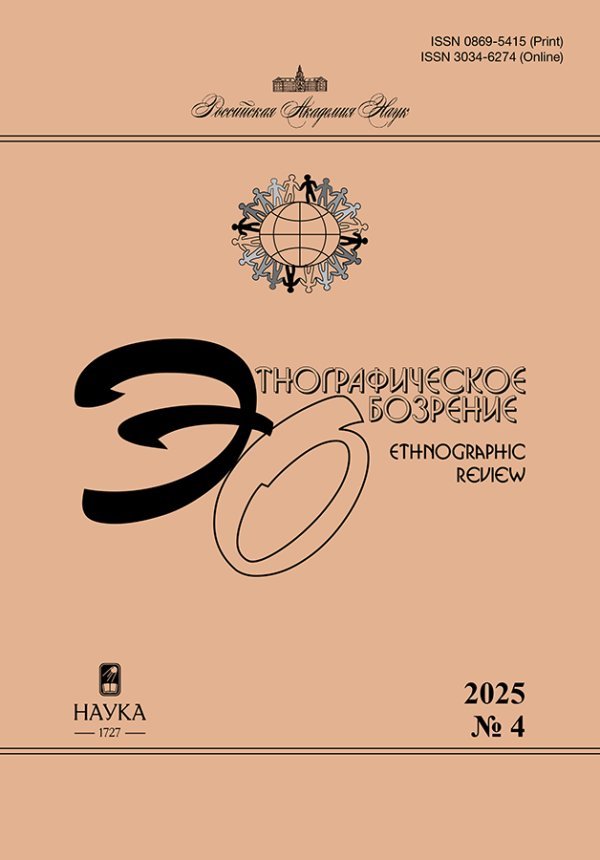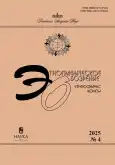Warrior Exercises That Become a Dance: Kalarippayattu, Thang-Ta, Raibenshe, Natua in Today's India
- Authors: Ryzhakova S.I.1
-
Affiliations:
- Institute of Ethnology and Anthropology, Russian Academy of Sciences
- Issue: No 4 (2025)
- Pages: 22-43
- Section: Special Theme of the Issue: Ethnography of Performing Arts (guest editor S.I. Ryzhakova)
- URL: https://stomuniver.ru/0869-5415/article/view/697013
- DOI: https://doi.org/10.31857/S0869541525040034
- ID: 697013
Cite item
Abstract
Kinetic practices, which until recently were part of the daily internal practice of particular groups involved in martial art in India, are now coming onto the stage, have formed and continue to form a new format for their existence, concentrating on presentation to an audience – both inside the country, at various seminars and festivals, and broadly in the international arena. The traditions of Kalarippayattu, Thang-ta, Raibenshe and Natua are good examples of martial arts, whose sets of exercises that in today’s India are gradually becoming dance or stage performance. Drawing on extensive ethnographic material collected during the expeditions in 2002–2025 in India (West Bengal, Kerala and Manipur), I describe the changes that occurred in traditional martial practices in the 20th century. Each of the traditions analysed was until recently associated with a specific caste community and was practised in gymnasiums (such as the kalari of Kerala) or in the open air, with no audience intended for the application of the skills acquired. However, the change in the socio-economic picture and all the conditions of life, which became evident in the middle of the 20th century, required a transformation of the professional skills of the martial communities and the ways of their usage.
Keywords
About the authors
S. I. Ryzhakova
Institute of Ethnology and Anthropology, Russian Academy of Sciences
Author for correspondence.
Email: s.ryzhakova@gmail.com
ORCID iD: 0000-0002-8707-3231
д. и. н., ведущий научный сотрудник 32a Leninsky prospekt, Moscow, 119991, Russia
References
- Alter, J.S. 1992. The Wrestler’s Body: Identity and Ideology in North India. Berkeley: University of California Press.
- Balakrishnan, P. 1995. Kalaripayattu: The Ancient Martial Art of Kerala. Trivandrum: C.V.N. Kalari.
- Barbosa, D. 1989. The Book of Duarte Barbosa. Vol. II, Trans. Mansel Longworth Dames. New Delhi: Asian Educational Services.
- Bharucha, R. 1995. Chandralekha: Woman Dance Resistance. New Delhi: Indus.
- Chirakkal T. Nair S. 2016. Kalarippayattu – A Complete Guide to Kerala’s Ancient Martial Art. Chennai: Westland Books.
- Dutt, G. 1937. The Bratachari Synthesis. Calcutta: Bengal Bratachari Society.
- Jataayu, A.M. 2021. Annapurna Devi: The Untold Story of a Reclusive Genius. Gurugram: Ebury Press; An Imprint of Penguin Random House.
- Luijendijk, D.H. 2008. Kalarippayat: The Structure and Essence of an Indian Martial Art. PhD. Radboud Universiteit Nijmegen. https://repository.ubn.ru.nl/bitstream/handle/2066/65537/65537_kala.pdf
- Majhi, N. 2022. The Uniqueness of Jagadrāmī Rāmāyaṇa: An Overview. Brainwave: A Multidisciplinary Journal 3 (2): 150–154.
- Ryzhakova, S.I. 2022. Boevoe iskusstvo kak element obriada i tantseval’naia praktika: fenomen chkhau na plato Chkhota-Nagpur (Vostochnaia Indiia) [Martial Art as an Element of Ritual and Dance Practice: The Phenomenon of Chhau on the Chhota-Nagpur Plateau (Eastern India)]. Anthropological forum 53: 100–130.
- Ryzhakova, S.I. 2024. “Smekh bogini rozhdaet mir”. Padaiani, ritual’naia traditsiia tsentral’noi Keraly [“The Laughter of the Goddess Gives Birth to the World”: Padayani, a Ritual Tradition of Central Kerala]. In Vostokovednye polevye issledovaniia: Materialy Vserossiiskoi nauchnoi konferentsii (2023 g.). Izbrannye doklady, edited by Y.A. Pronina. Moscow: Institut vostokovedeniia RAN.
- Zarrilli, P. 1986. From Martial Art to Performance: Kalarippayattu and Performance in Kerala, Pt. 1, 2. Sangeet Natak 81-2: 5–41; 83: 14–45.
- Zarrilli, P.B. 1998. When the Body Becomes All Eyes: Paradigms, Discourses, and Practices of Power in Kalarippayattu, a South Indian Martial Art. Delhi: Oxford University Press.
Supplementary files











